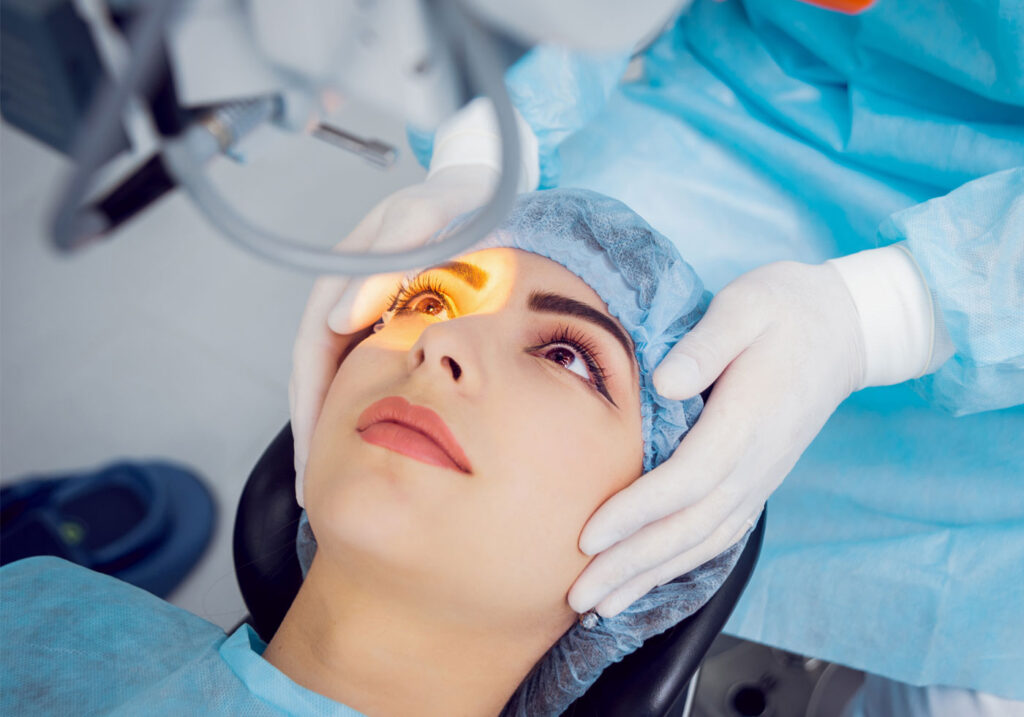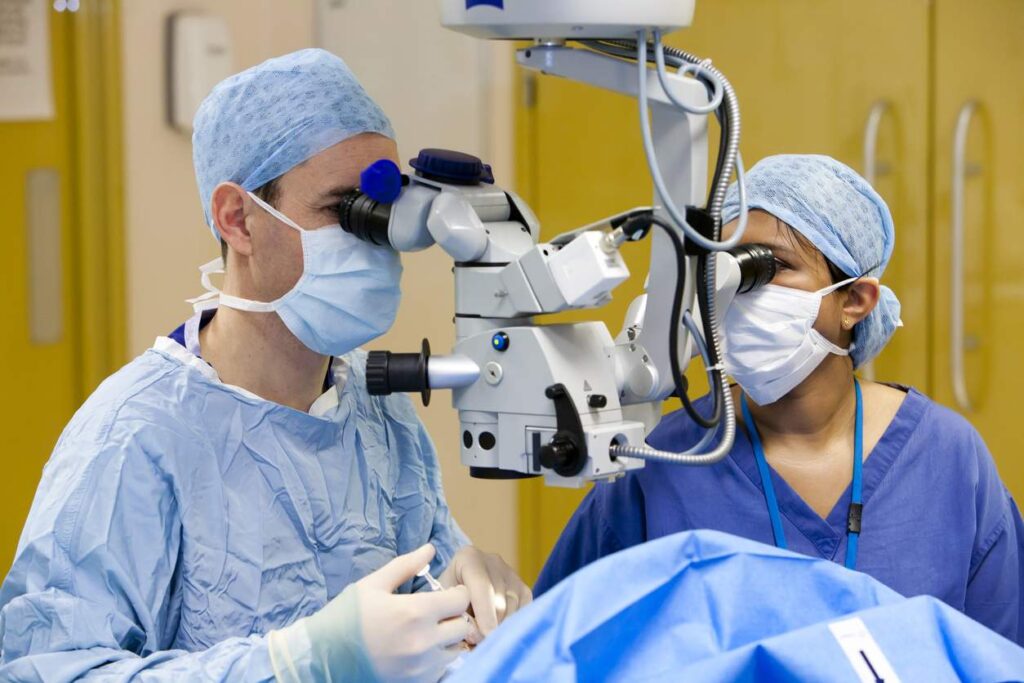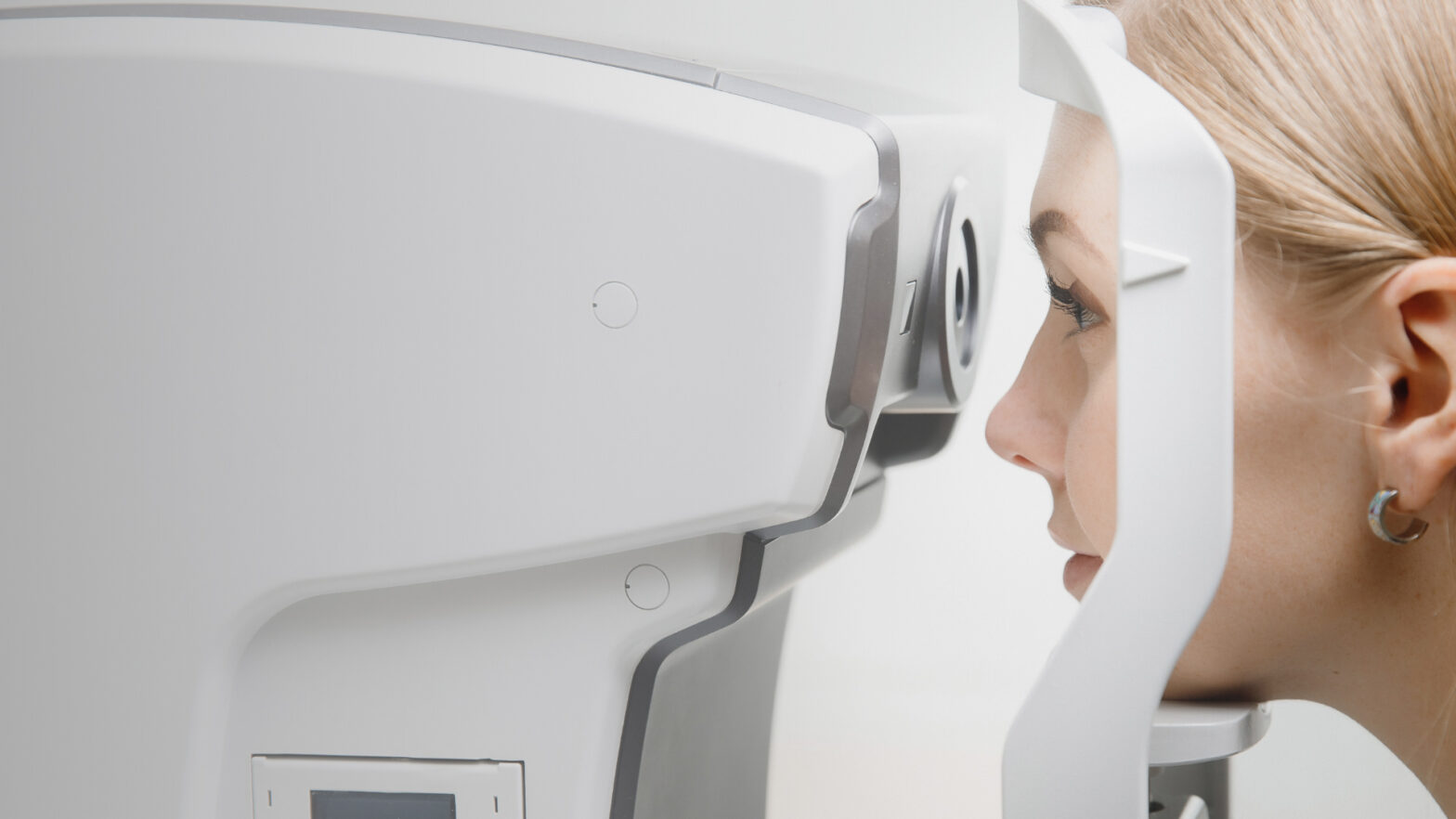Cataracts are common in adults, but many parents are unaware that their children are also at risk. Cataracts are more frequent in the elderly, although they can also develop in infants and young children. That cataract you keep hearing about, what do you think it is? The clouding of the lens of the eye is called a cataract. The lens is normally transparent and pristine, but in situation when there is a cataract it becomes cloudy. Pediatric cataract can range in size from small and unnoticeable to massive and potentially blinding.
Cataracts vary in their development throughout infancy, with some appearing at birth or being inherited and others appearing later as the child grow and need cataract eye surgery. Some appear because of unintended outcomes of treatment, health issues, or trauma. Cataracts are ocular obstructions that prevent incoming light and pictures from reaching the retina, hence impairing visual acuity (which is like the film of a camera in the back of the eye).
Vision development in children depends on the clarity of the light and pictures reaching the retina and being sent to the brain. Amblyopia is a disorder where vision is impaired because the brain’s visual centres do not mature as they should due of a cataract’s obstructive effect on clear vision. To avoid irreversible vision loss, cataracts should be treated. Surgery is necessary to correct vision-impairing cataracts in children.
Cataract removal is necessary because it can hinder the brain’s visual cortex from maturing normally. Cataract surgery may be necessary if symptoms of impaired vision manifest themselves, although small cataracts that have not yet caused any noticeable problems with vision may be carefully watched at first. If a cataract is tiny or located in an unusual place, it may be possible to delay or even prevent surgery altogether if glasses and/or a patch are used to correct vision.
Using specialised lighting and devices, a paediatric ophthalmologist can evaluate the severity of the cataract in a child’s eyes.

How often are cases of cataracts in children?
Cataracts affect about 3 out of every 10,000 kids. Rates of occurrence differ from one region to another. The symptoms that shows up in kids manifest in several ways; a hazy or white spot can occasionally be seen in the centre of the pupil, the black circular area in the centre of the coloured part of the eye (iris). Patients may also appear with symptoms such as ocular tremors or a misaligned or wandering eye (strabismus or nystagmus).
In order to detect a cloud in the pupil, paediatricians will test the light reflex of a child’s eye. An eye doctor who specialises in paediatric patients should be consulted if any of these symptoms are noticed in a child.
When treating a kid with cataract, the steps and procedure involve the following:
Cataract surgery in children is done while they are under general anaesthesia. The removal of a cataract requires a few tiny incisions to be made in the eye. Lens capsules are pierced at the front to allow light in. The clouded, mushy centre of the child’s lens is removed using suction.
A larger vitreous gel removal and more posterior lens capsule opening may be necessary in younger youngsters (called a vitrectomy). Once the natural lens has been removed, the lens capsule is occasionally replaced with an intraocular lens. Wounds are closed with dissolvable sutures, and the eye is covered with a patch for the night.
If you’re considering having cataract surgery done for you or your child, these are the potential risks:
When performed by a skilled surgeon, cataract surgery has a high rate of success and little risk of complications. In spite of this, there are always potential complications with any type of surgical operation.
Infection, retinal detachment, blindness or the loss of an eye, glaucoma, inflammation, displacing the intraocular lens, and capsular cloudiness or scar tissue are all potential complications of pediatric cataract surgery. After the cataract is removed, how does the eye adjust its focus? The lens within the eye works to concentrate light and pictures so that the viewer has sharp vision regardless of the viewing distance.

One can regain their eyes’ capacity to concentrate in a number of ways:
1. By inserting a permanent intraocular lens implant (IOL) into the eye during surgery.
2. It is possible to insert a contact lens onto the cornea of the eye (contact lenses have to be removed and cleaned regularly)
3. Light beams may be concentrated by using glasses.
Even if an intraocular lens implant is used, most children will still require glasses following cataract surgery, and many will need bifocals to help them see up close. A kid’s cataract treatment options will vary based on the child’s age and the type of cataract the child has.
Polar Cataract Forming in the Frontal Lobes
The cataract known as an anterior polar cataract is distinct from other types of cataracts. This cataracts in children’s eyes typically appear as a little “dot” in the centre of the pupil, the darkest part of the iris is the pupil (the coloured portion of the eye). Congenital anterior polar cataracts are present from birth and affect vision immediately.
The majority of cataracts in the anterior polar region are mild. Most may be seen and monitored without resorting to surgery, and they pose little threat to a child’s eyesight. A few people may develop or enlarge cataracts in the eye’s anterior polar region, and cataracts can only be removed surgically.
Most anterior polar cataracts can be managed medically, but they can still result in a refractive defect that requires corrective lenses for a child’s eyes.
Lazy eye, also known as amblyopia, can be caused by a significant refractive defect in some people. Eye drops or patches can help with this disease.
A medical professional should examine patients who have developed an anterior polar cataract to ensure they will not require corrective lenses. To ensure the cataract does not progress, follow-up visits to the clinic are required on a regular basis. Visits to the eye clinic should be scheduled at the intervals recommended by your doctor.
